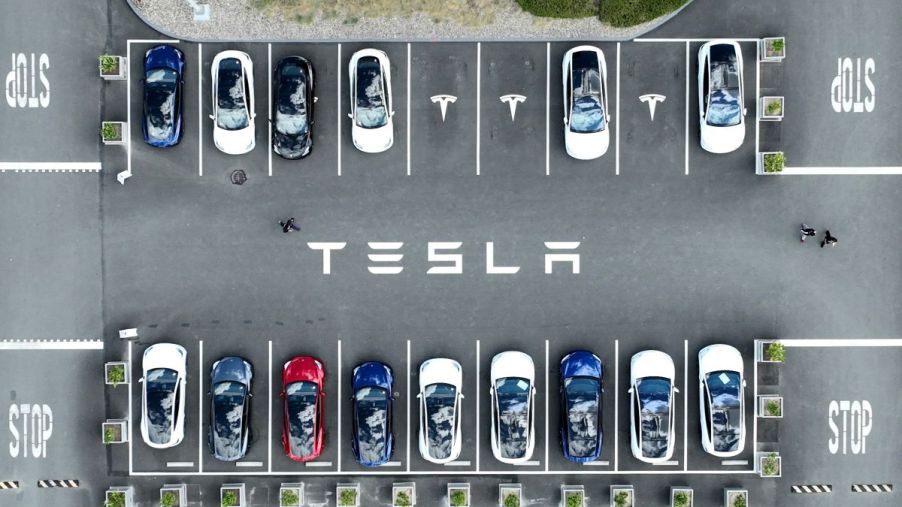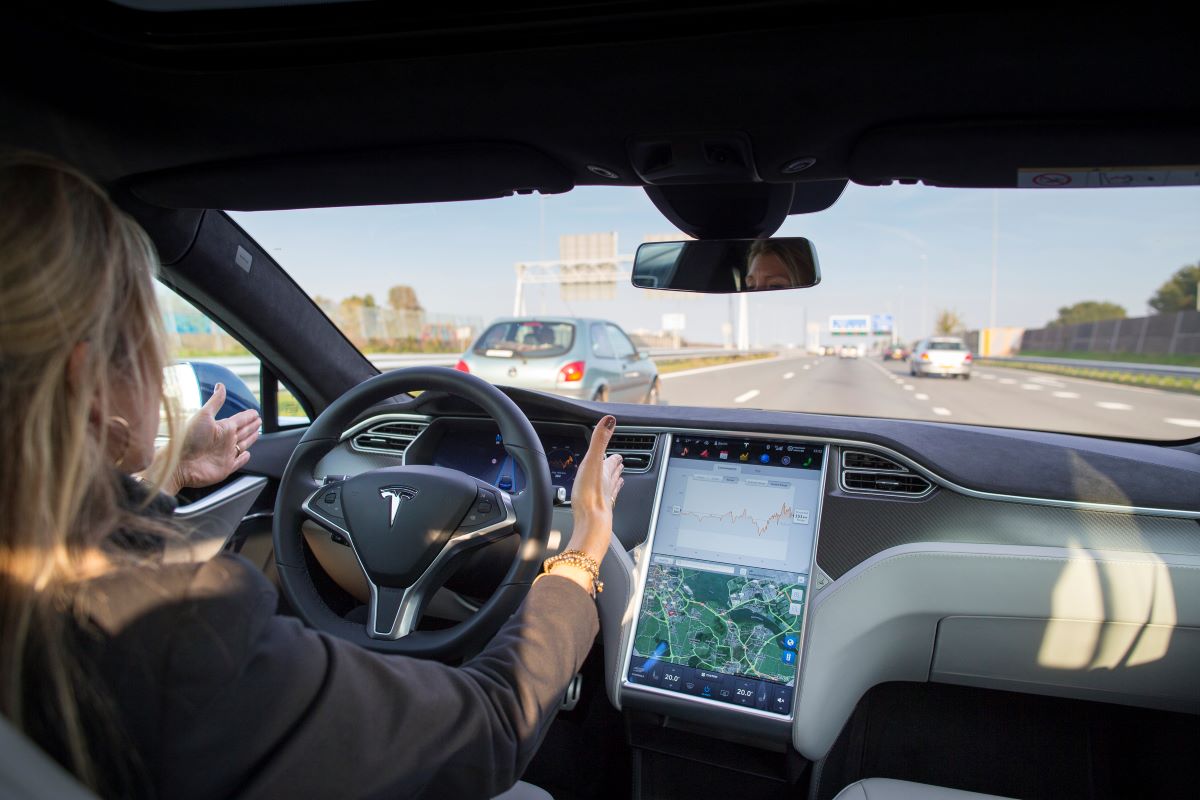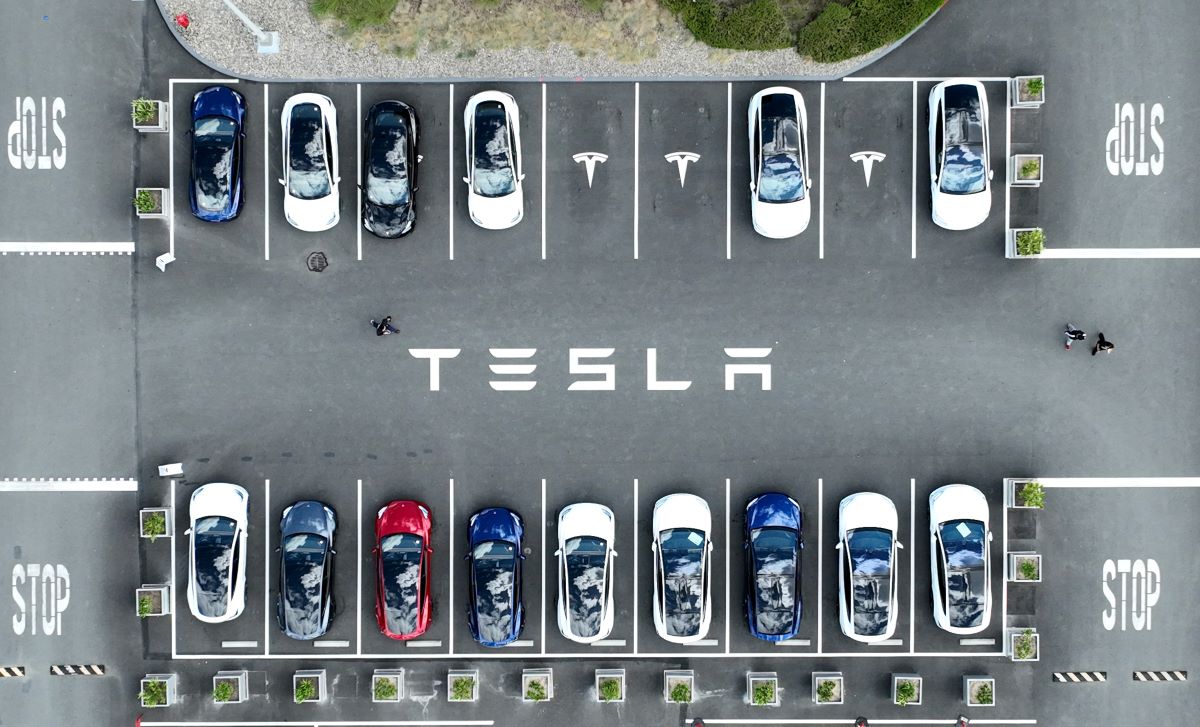
Tesla FSD May Lower Traffic Accidents, But Tesla Drivers Prove They Don’t Need It
Tesla drivers often boast about how much better their cars are than ours. They attract attention with customizable horn sounds, pulling the “key” out of their wallet and, of course, that blistering acceleration. There are dozens, if not hundreds, more amenities left to brag about, and Tesla owners will go until they’re blue in the face to tell you. Tesla FSD (Full Self-Driving) is another feature on the long list, but does it really make a big difference?
What is Tesla FSD?

Tesla FSD is an advanced driver-assistance system aiming to enable fully autonomous capabilities to eliminate human intervention during driving. The system piggybacks off of Tesla’s existing Autopilot system but seeks to go beyond these functionalities to navigate complex environments. For instance, city streets riddled with pedestrians, cyclists, and heavy traffic situations. Tesla has released multiple beta versions of FSD to selected users for real-world testing over the years.
Critically, above Autopilot 2.0 and 2.5, Tesla integrates trained neural networks with over-the-air updates to process and interpret the vehicle’s sensor inputs. Over time, Tesla FSD is set to become more accurate and reliable as it learns from various driving settings. And hopefully, the time will come soon when Teslas themselves stop having EV anxiety episodes halting traffic in the middle of the highway.
Until company CEO Elon Musk gives the green light for full autonomy, Tesla drivers are instructed to remain attentive and ready to take control of the vehicle anytime. That is, despite those who like to nap while commuting down the 405.
Has Tesla FSD killed anyone?
In current EV circles and at charge point scuttlebutts nationwide, Tesla drivers love to wax lyrical about how “intelligent” their Model 3, X, Y, or S is. However, they are forced to face the fact that people are injured and even killed by them. Consequently, Tesla is subject to an ongoing federal probe to assess the performance of Tesla’s Autopilot system and FSD.
The NHTSA (National Highway Traffic and Safety Administration) has called on their ODI (Office of Defects Investigation) to open a preliminary evaluation on over 800,000 Tesla vehicles. The following are the complaint conditions:
- Crashes/fires: 14
- Injury accidents: 7
- Number of injuries: 15
- Fatality incident: 1
- Number of fatalities: 1
Recently, Reuters reported a Tesla vehicle hitting a North Carolina high school student getting off their school bus. The bus was stationary, displaying its crossing signs and lights, but the Tesla failed to stop. Although the driver was charged, the NHTSA is still unsure whether Tesla’s Autopilot or the FSD system was engaged during the accident or if the driver was the cause.
Many of the incidents mentioned above have been seen on nightly news reels or in the national spotlight. While at least one person has been killed by an FSD-equipped Tesla, how does it compare to statistics from traffic incidents in standard cars?
Tesla fights back
We all know Tesla drivers love statistics. The Model S Plaid’s 1.99-second 0 to 60 mph time, its 400-mile range, the 200-mile charge in just 15 minutes, and much more. We won’t mention the stats behind all the battery-sourcing pollution they tend to scoff at. But they won’t either.
Nevertheless, Tesla crunched the numbers through the most recent Impact Report. In spite of all the negative press, the company shows its cars, while Autopilot is engaged, are much less prone to accidents than you may think.
| Total U.S. Vehicle Fleet | Tesla Vehicles (no active safety features) | Tesla Vehicles (FSD Beta engaged, mostly non-highway miles) | Tesla Vehicles (Autopilot engaged, mostly highway miles) | |
| Number of Vehicular Accidents per Million Miles (2022) | 1.53 | 0.68 | 0.31 | 0.18 |
Only one accident per five million miles is an impressive feat. However, the more interesting figure is how Teslas avoid accidents when none of the active safety systems are on.
Who are Tesla owners?

There are no faking figures like those above, but they do contradict popular opinion. Axios asserts that Tesla drivers are commonly subject to harassment, including road rage. Is it because of erratic driving, or is it unwarranted? Automotive analytics outlet Jerry produced a study looking at Tesla drivers to see who they are and how they drive. Here’s what they found about who owns Teslas:
- 83% are men, compared to 49% for all other drivers.
- 70% are under the age of 35.
- 33% have either a master’s degree or Ph.D., compared to 13% of all other drivers.
- The three most common Tesla owner professions: engineers, operations managers, and software engineers.
- Average median household income: $85,000.
Overall, the study shows Tesla drivers are typically male with higher-than-average education levels and income. While that may paint a picture of responsibility for some, Tesla drivers also have one thing in common: the desire for hard acceleration. Subsequently, according to the study’s analysis, they scored worse than 98% of all drivers in acceleration safety.
It explains that the blame could lie in a Tesla’s astonishing acceleration in “Ludicrous” mode, as “sudden bursts of speed push acceleration scores lower.” But regarding overall speed scores, Tesla owners, on average, drive slower relative to the speed limit. The study reiterates, though, that differences in overall safety averages regarding average speeds were minimal.
The distraction score, Jerry claims, was the one area where Tesla owners did better than others. Tesla drivers were ranked 10th out of the 52 car brands based on how frequently drivers handled their smartphones while behind the wheel, with a higher ranking denoting less distracted driving. Even though Teslas come with a massive tablet-like screen in the center stack, it seems to be safer than thumbing through a smartphone while on the go.
Tesla incentivizes safe driving
Tesla drivers love being part of the Musk-driven EV movement as much as possible. Not only are they evangelizing in the break room, but they’re also participating in behavior studies with the automaker.
In the company’s Impact Report, Tesla is now including a beta-version Safety Score. The program incentivizes safe driving, which determines rates in the Tesla Insurance program. Customers who choose to participate receive a Safety Score based on driver behavior. Algorithms will factor in general demographic information like age, education level, and gender. But it also includes financial history and will monitor behavior such as:
- Aggressive turning
- Autopilot disengagement
- Excessive speeding
- Forward collision warnings
- Hard braking
- Late-night driving
- Tailgating
- Unbuckled driving
Tesla’s data shows that customers who enabled the service have an average Safety Score of 90 out of 100. So, the next time your late-20-something male corporate operations manager friend comes up to you to brag about his low insurance premiums, Tesla FSD may have little to do with it. It could be all down to his driving and, of course, Tesla engineers watching eerily through the cabin cameras.
Is Tesla FSD safer than humans?
The eyes of Big Brother Musk aside, Tesla FSD has shown that it can seriously cut the rate of vehicular accidents. Even though drivers must remain attentive and with their hands on the steering wheel/yoke at all times, the system has opened up a world of transportation possibilities.
Some of Tesla FSD’s key merits include the following:
- Enhanced safety: FSD reduces human error through advanced sensors, cameras, and machine learning algorithms, to detect and respond to potential hazards more quickly and accurately than human drivers.
- Traffic optimization: the system can effectively navigate traffic congestion, find optimal routes, and maintain consistent speeds, resulting in a smoother and more fuel-efficient driving experience, saving time and fuel consumption.
- Convenience and comfort: with Tesla FSD, drivers can enjoy a more relaxed driving experience, especially during long trips or daily commutes, mitigating driver fatigue.
- Increased accessibility: FSD technology, Tesla or otherwise, can significantly benefit people with disabilities or mobility issues, enabling more independent travel.
It’s important to note that while the Tesla FSD system has shown promise, it’s not yet fully autonomous. Though, your friend might try to convince you. That is, until the dreaded “Black Screen” plagues driver control at highway speeds, causing them to drop their razor into their cornflakes. But as they go deeper and deeper into a monologue-turned-harangue about their near worship of business magnet—not magnate—Elon Musk, feel reassured that they’re actually, statistically speaking, probably a safer driver than you are.


